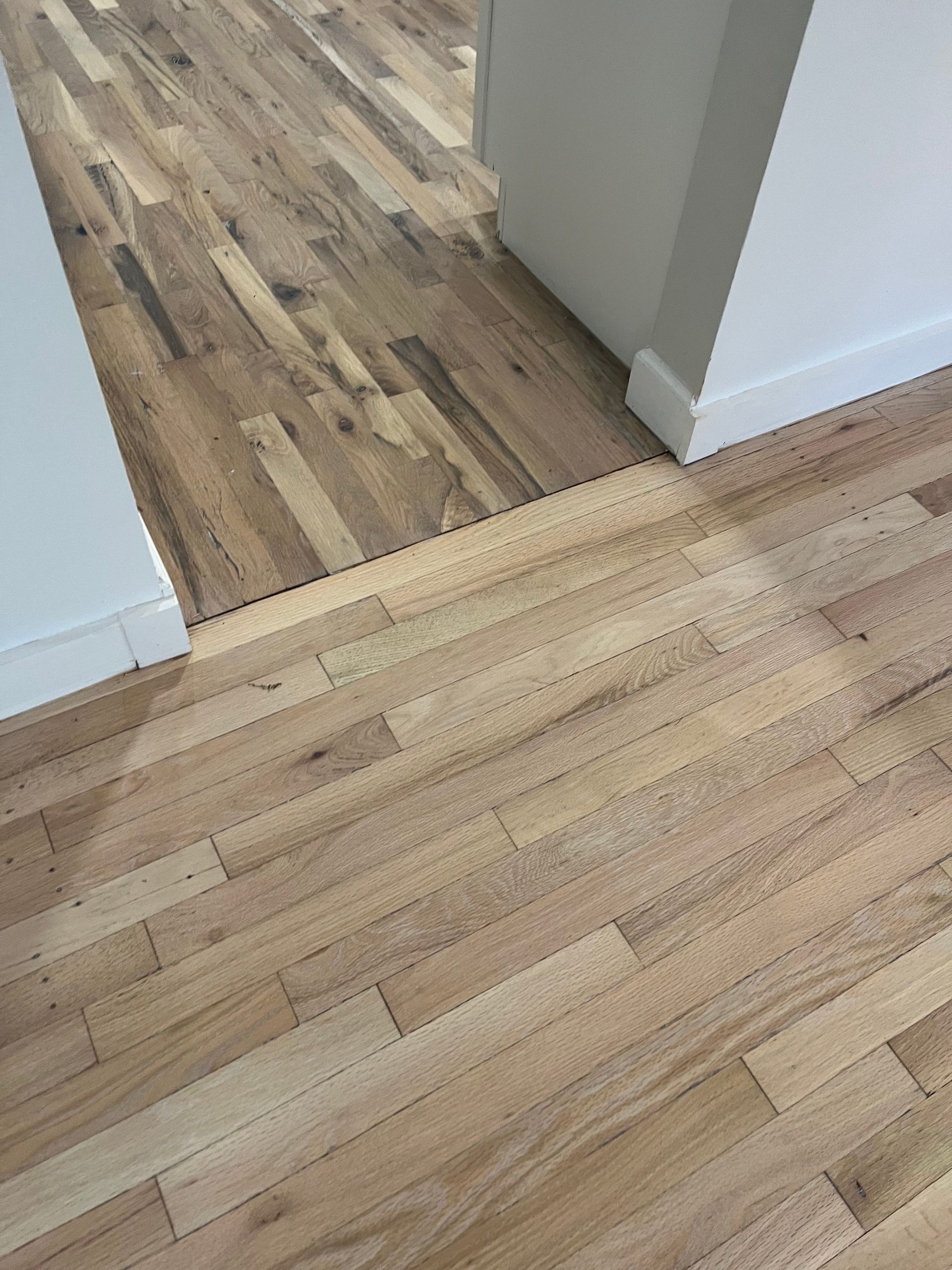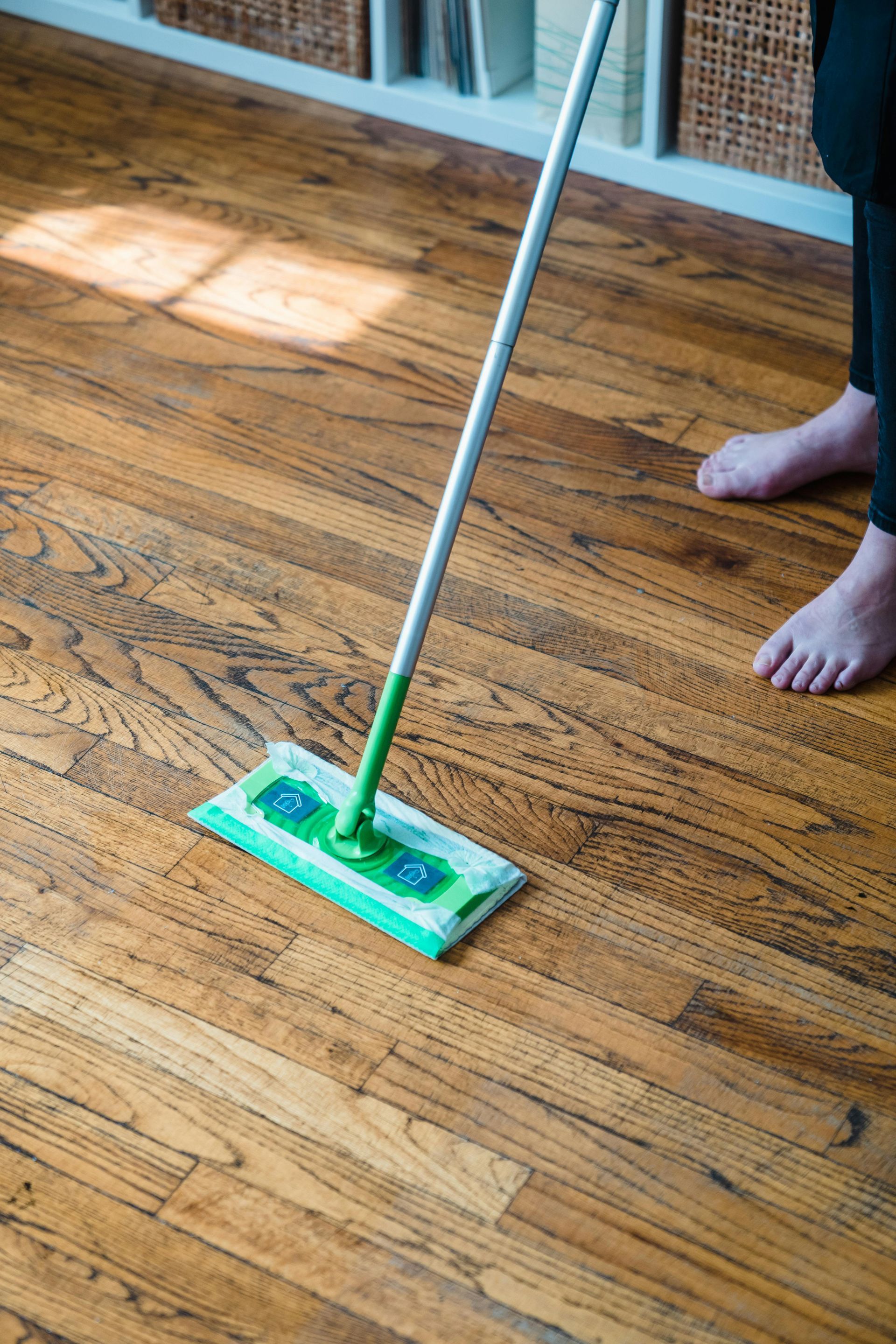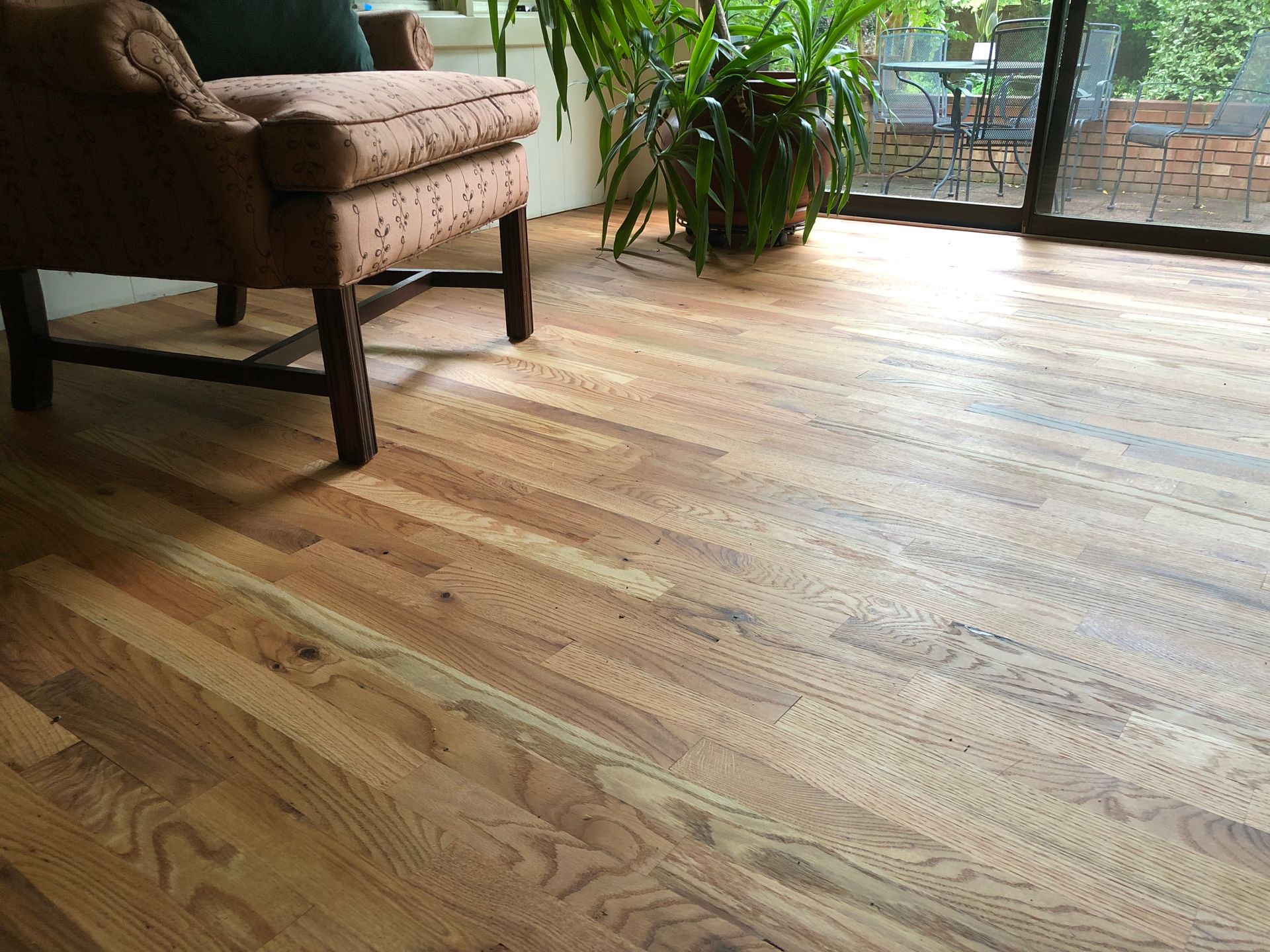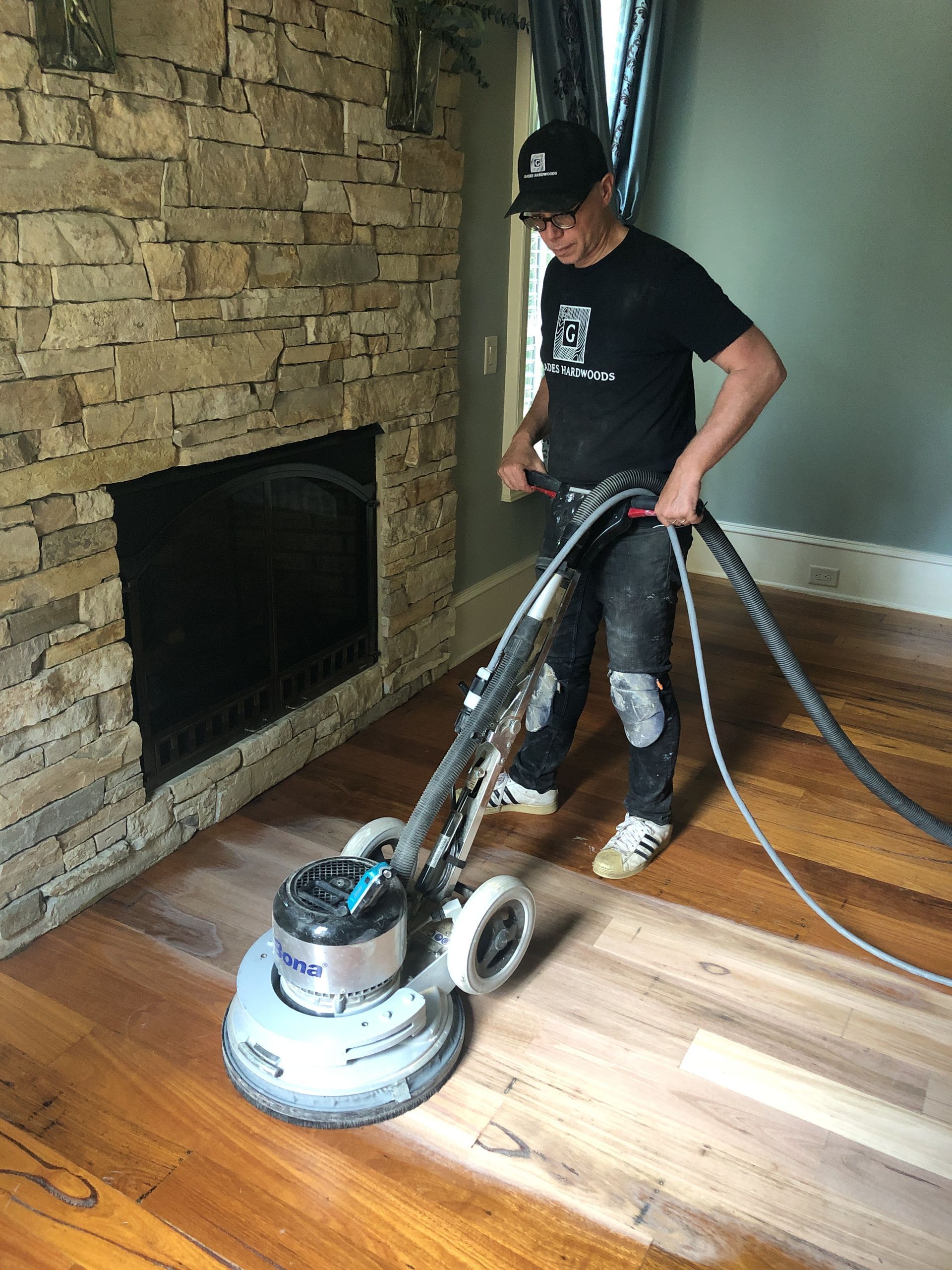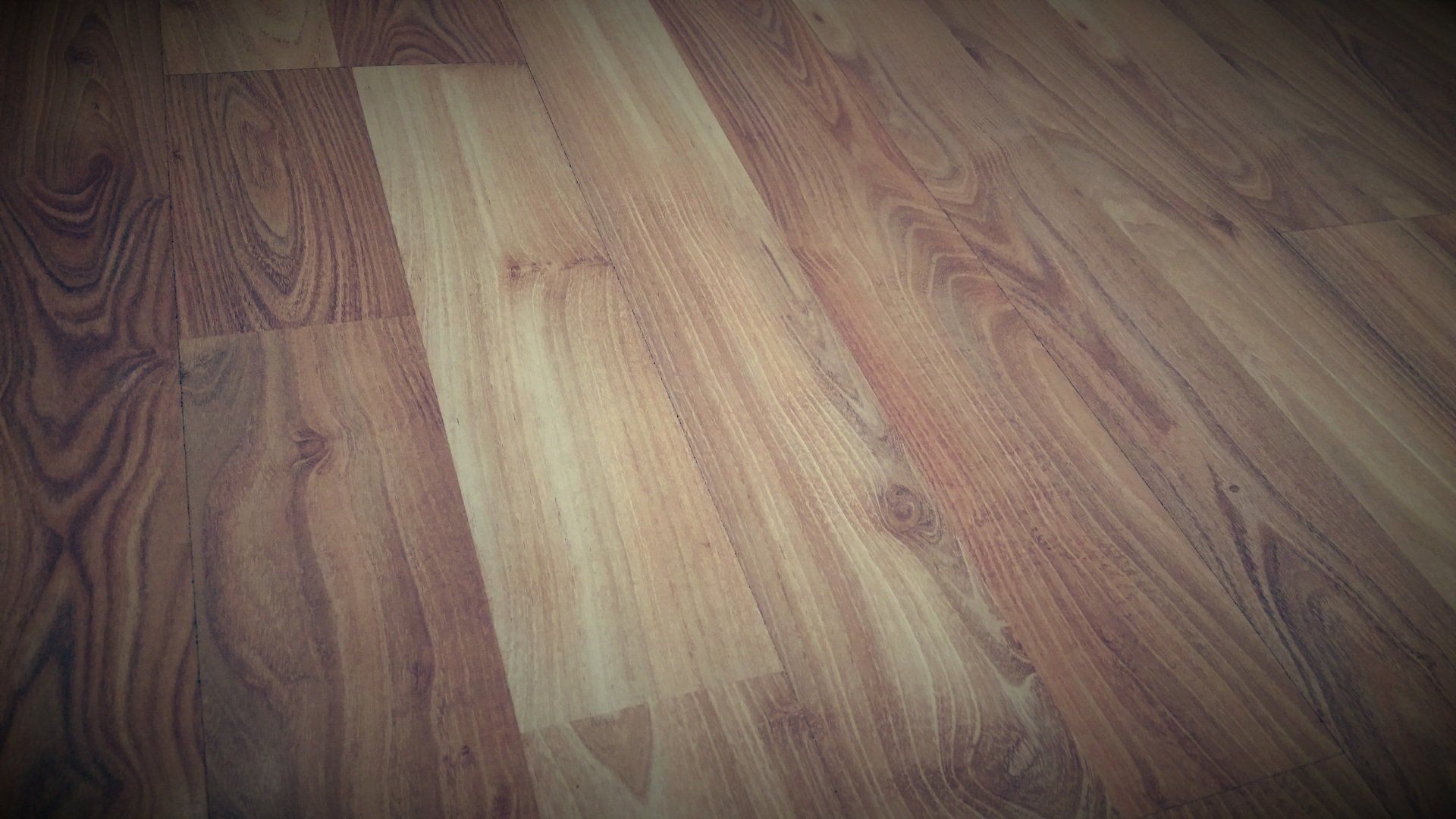The Difference Between Poly and Natural Oil Finishes for Hardwood Floors
Finishes for hardwood flooring.

The Difference Between Polyurethane and Natural Oil Finishes for Hardwood Floors
Hardwood flooring is one of the most popular choices for homes and businesses due to its natural beauty, durability, and timeless appeal. However, the type of finish applied to the hardwood significantly affects its appearance, performance, and maintenance requirements. Two commonly used finishes are polyurethane (poly finish) and natural oil. Each has its unique characteristics, advantages, and drawbacks. In this guide, we’ll explore the differences between these two finishes in detail, helping you choose the right one for your needs.
1. Composition and Characteristics
Polyurethane Finish:
Polyurethane is a synthetic, film-forming finish that sits on the surface of the wood. It creates a hard protective layer that acts as a barrier between the wood and external elements. There are two main types of polyurethane:
- Water-Based Polyurethane:
- Clear finish that does not yellow over time.
- Dries quickly, usually within hours.
- Produces less odor and emits fewer volatile organic compounds (VOCs).
- Oil-Based Polyurethane:
- Offers a warm, amber hue that enhances the wood’s natural color.
- Takes longer to dry (typically 24 hours or more).
- More durable than water-based options but emits higher levels of VOCs.
Natural Oil Finish:
Natural oil finishes penetrate deep into the wood fibers, nourishing the material from within rather than forming a layer on the surface. These finishes are often made from plant-based oils like linseed, tung oil, or modern synthetic formulations that mimic natural properties.
- Enhances the wood’s natural texture and grain.
- Provides a breathable, matte finish that ages gracefully over time.
- Environmentally friendly options are often available, with low or no VOCs.
2. Appearance
The aesthetic appeal of hardwood flooring is a major consideration when choosing a finish. Polyurethane and natural oil finishes offer distinct looks:
- Polyurethane Finish:
- Creates a glossy, satin, or matte sheen, depending on the product.
- Gives the floor a “finished” look with a clear coat that can sometimes mask the natural texture of the wood.
- Water-based polyurethane preserves the wood’s original color, while oil-based options add a warm, amber tone.
- Natural Oil Finish:
- Offers a soft, matte appearance that emphasizes the wood’s natural beauty and texture.
- Allows the grain and character of the wood to shine through, creating a more organic and authentic look.
- Develops a patina over time, giving the floor a timeless, lived-in appeal.
3. Durability and Protection
Durability is a critical factor, especially for high-traffic areas or homes with pets and children.
- Polyurethane Finish:
- Provides a tough, protective layer that shields the wood from scratches, spills, and stains.
- Oil-based polyurethane is particularly durable and resistant to wear, making it ideal for commercial spaces and high-traffic areas.
- Water-based polyurethane, while less durable than oil-based, offers sufficient protection for residential use and does not yellow over time.
- Natural Oil Finish:
- Penetrates the wood fibers, strengthening the material from within rather than forming a surface barrier.
- Less visable surface scratches compared to polyurethane.
- Easy to repair: scratches and worn areas can be spot-treated without needing to refinish the entire floor.
4. Maintenance Requirements
The level of maintenance required for each finish varies significantly and can influence your decision:
- Polyurethane Finish:
- Low-maintenance option. Once applied, it requires no reapplication for many years.
- Difficult to repair localized damage; scratches or wear typically require sanding and refinishing the entire floor.
- Regular cleaning with a soft mop or vacuum is usually sufficient to maintain its appearance.
- Natural Oil Finish:
- Requires periodic re-oiling to maintain its protective qualities and appearance. The frequency depends on the level of foot traffic, but annual maintenance is common.
- Easy to repair: scuffs and scratches can be fixed by reapplying oil to the affected area.
- Cleaning involves using Ph Neutral products.
5. Environmental and Health Considerations
Environmental impact and indoor air quality are becoming increasingly important factors in choosing a finish:
- Polyurethane Finish:
- Oil-based polyurethane emits higher levels of VOCs, which can affect indoor air quality during and shortly after application.
- Water-based polyurethane is a more eco-friendly alternative with lower VOC levels and less odor.
- Once cured, polyurethane finishes are generally safe and inert.
- Natural Oil Finish:
- Often made from renewable, non-toxic materials.
- Emits little to no VOCs, making it safer for homes with sensitive individuals or children.
- Many natural oil products are biodegradable and environmentally friendly.
6. Cost and Longevity
Cost is a significant consideration, not just upfront but also over the lifespan of the finish:
- Polyurethane Finish:
- Typically more affordable upfront, especially for water-based options.
- Long-lasting, reducing the need for frequent maintenance or refinishing.
- Requires professional sanding and refinishing when it shows signs of wear, which can be costly.
- Natural Oil Finish:
- Higher initial cost due to premium products and more labor-intensive application.
- Requires regular maintenance and reapplication, adding to the long-term cost.
- Can last for decades with proper care, as it’s easier to refresh and maintain than polyurethane.
7. Applications and Suitability
The suitability of each finish depends on the setting and personal preferences:
- Polyurethane Finish:
- Ideal for high-traffic areas, commercial spaces.
- Suitable for those who want a polished look.
- Natural Oil Finish:
- Perfect for homeowners who value the natural beauty of wood and are willing to invest time in maintenance.
- Works well in residential settings, especially where a warm, organic aesthetic is desired.
8. Key Advantages and Drawbacks
Polyurethane Finish:
- Advantages:
- Highly durable and resistant to wear and tear.
- Low maintenance.
- Available in a range of sheens for different aesthetics.
- Drawbacks:
- Can look artificial, masking the wood’s natural texture.
- Difficult to repair localized damage.
- Higher VOC emissions during application (oil-based).
Natural Oil Finish:
- Advantages:
- Enhances the wood’s natural beauty and texture.
- Easy to spot-repair and maintain and less visable surface scratches.
- Eco-friendly and safe for indoor air quality.
- Drawbacks:
- Requires regular maintenance and reapplication.
- Takes longer to dry.
- Higher initial and long-term cost.
9. Choosing the Right Finish for Your Needs
The decision between polyurethane and natural oil finishes depends on your priorities, lifestyle, and aesthetic preferences:
- Choose Polyurethane if:
- You want a low-maintenance finish.
- Your floors will face heavy traffic or frequent spills.
- You prefer a polished, glossy, or satin look.
- Choose Natural Oil if:
- You love the natural, matte appearance of wood.
- You’re comfortable with periodic maintenance.
- You prefer eco-friendly and low-VOC products.
Both polyurethane and natural oil finishes offer distinct benefits, and the right choice depends on your specific needs. Polyurethane is a practical option for durability and low maintenance, while natural oil provides unmatched aesthetic appeal and a connection to the wood’s organic beauty. By understanding the differences outlined here, you can make an informed decision that complements your lifestyle, values, and design preferences.

